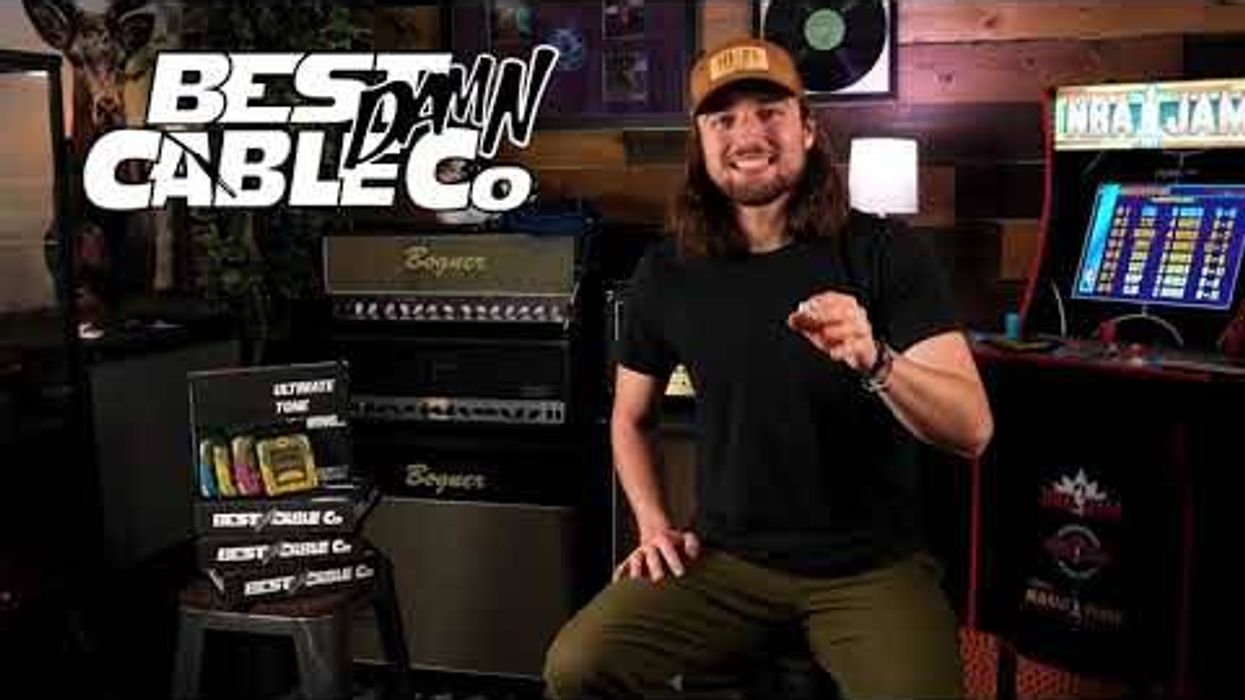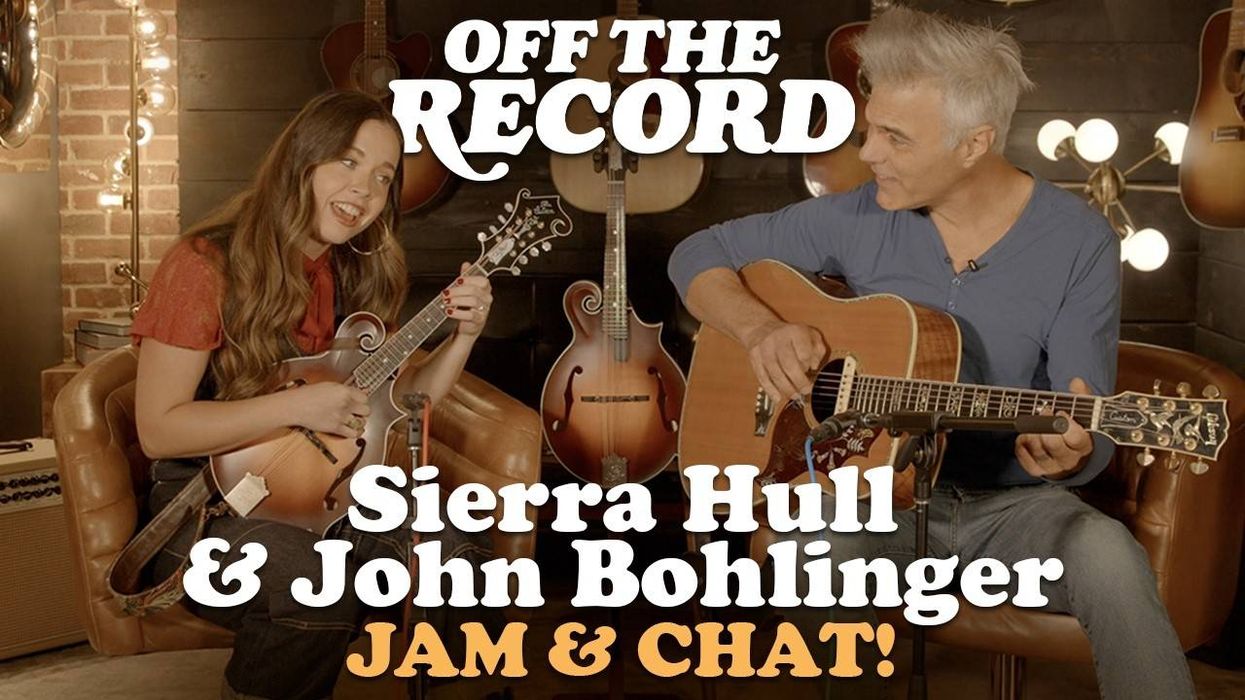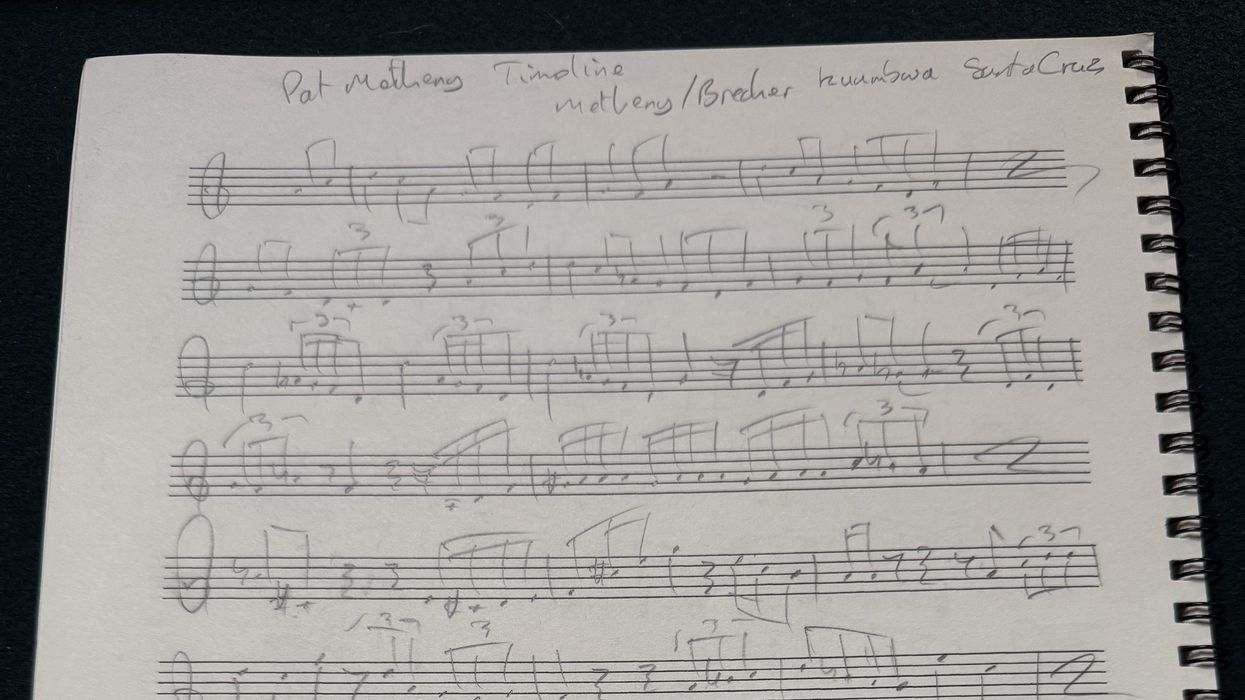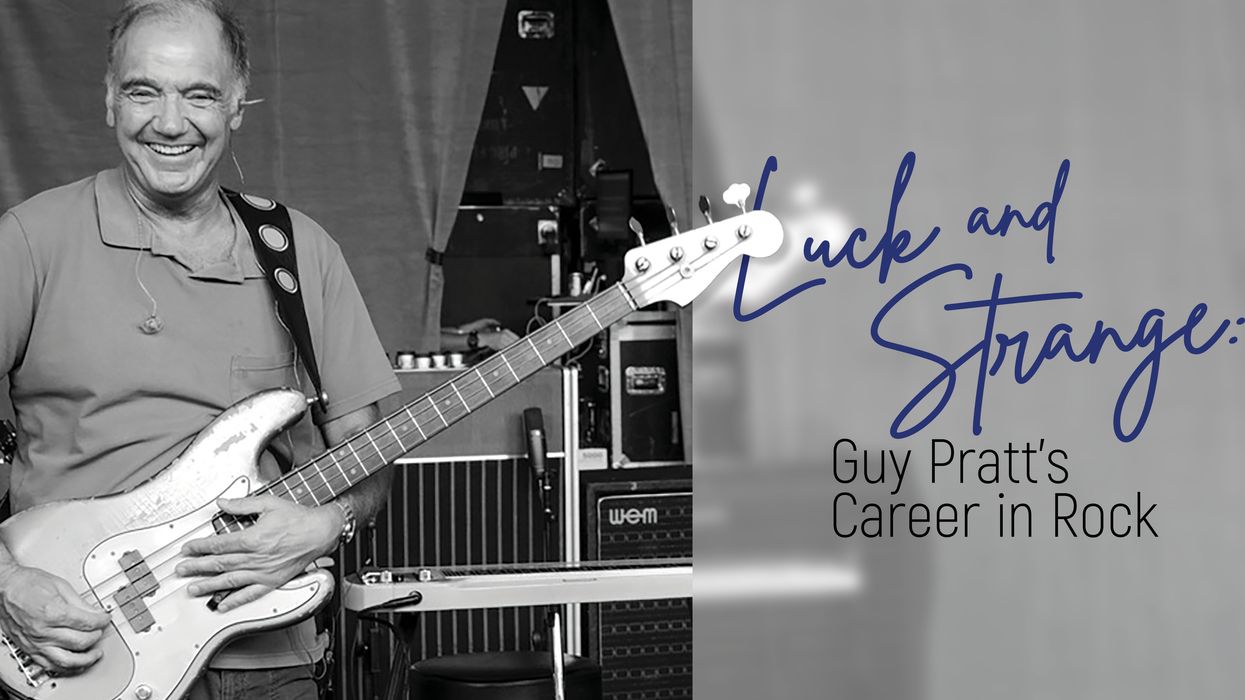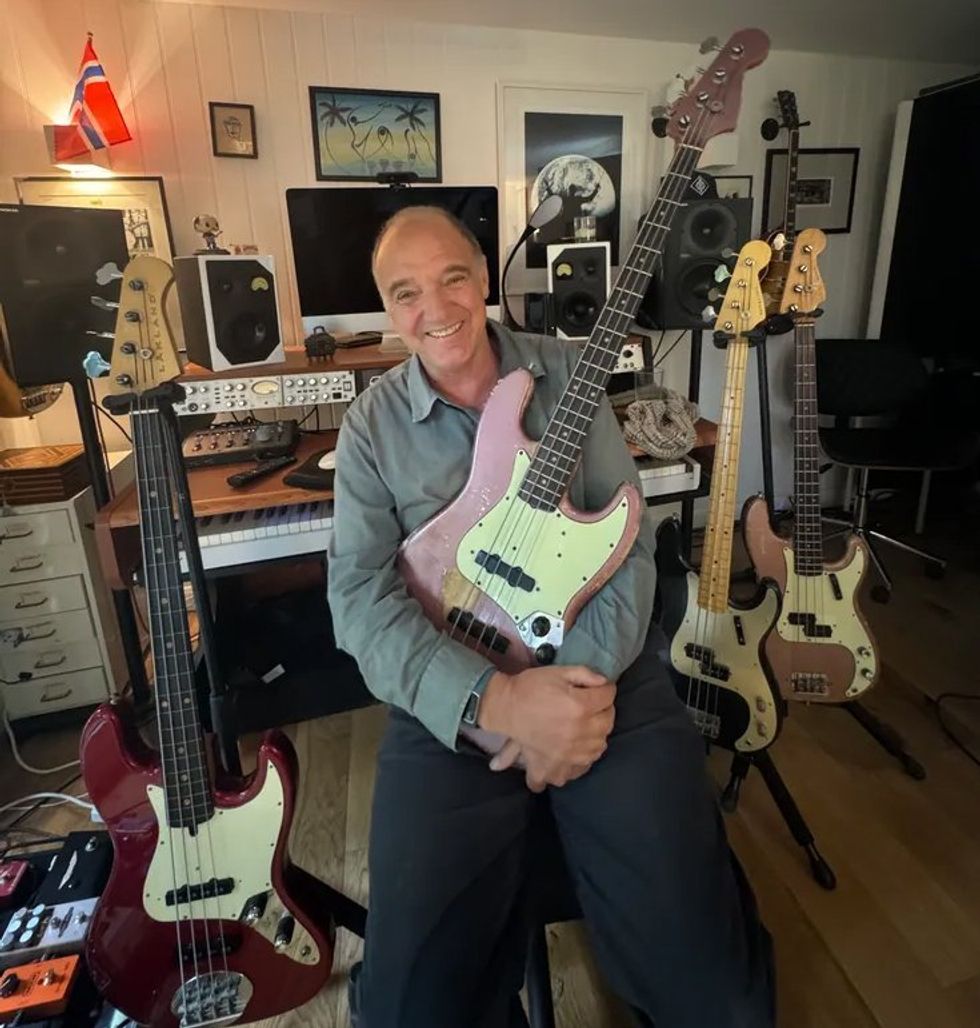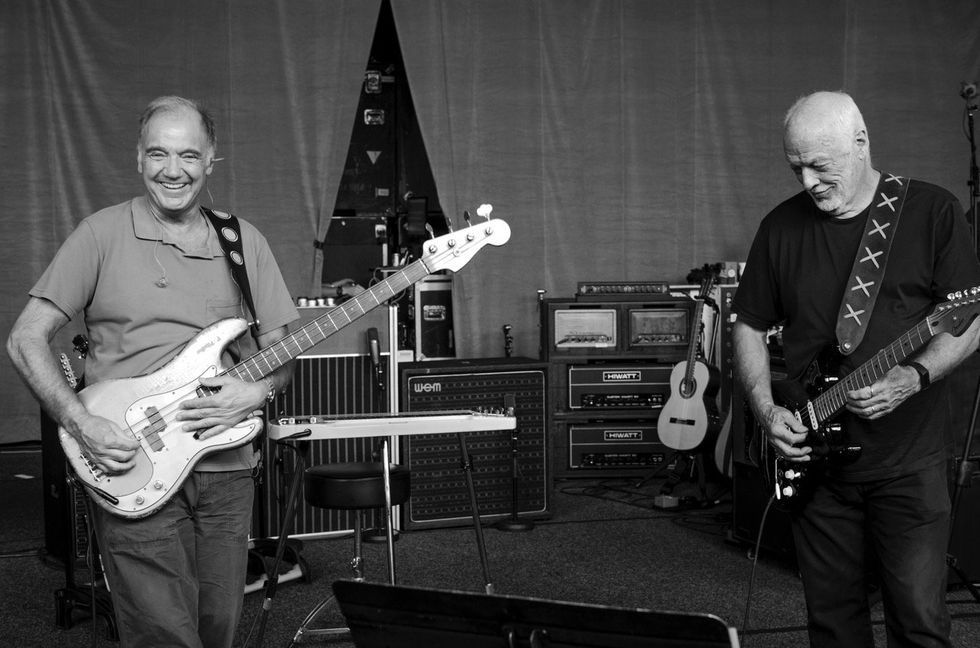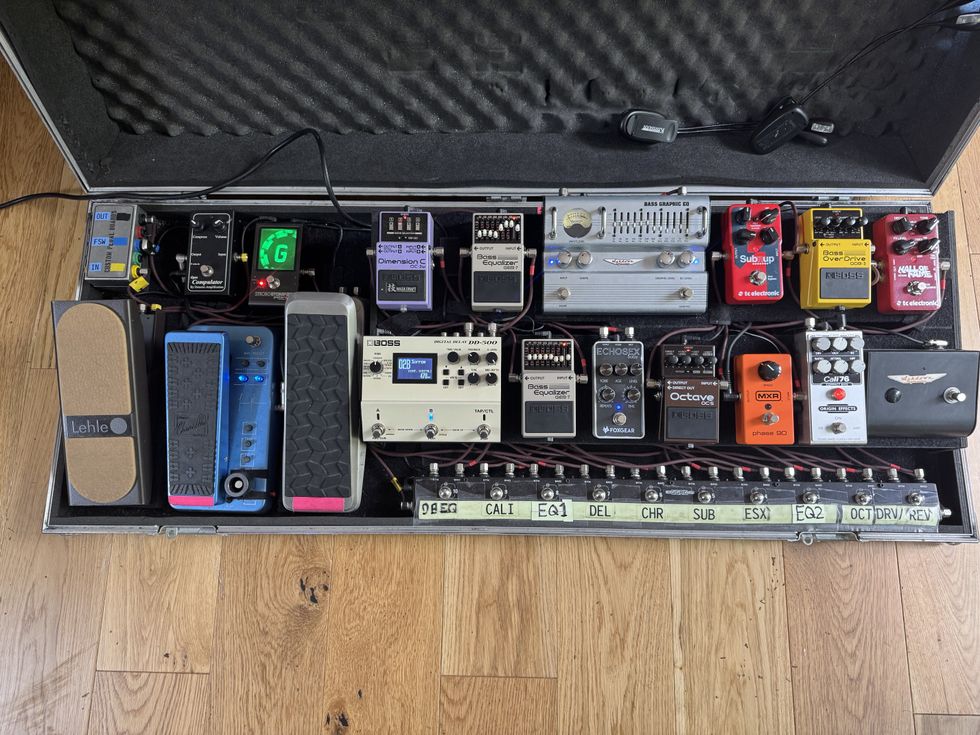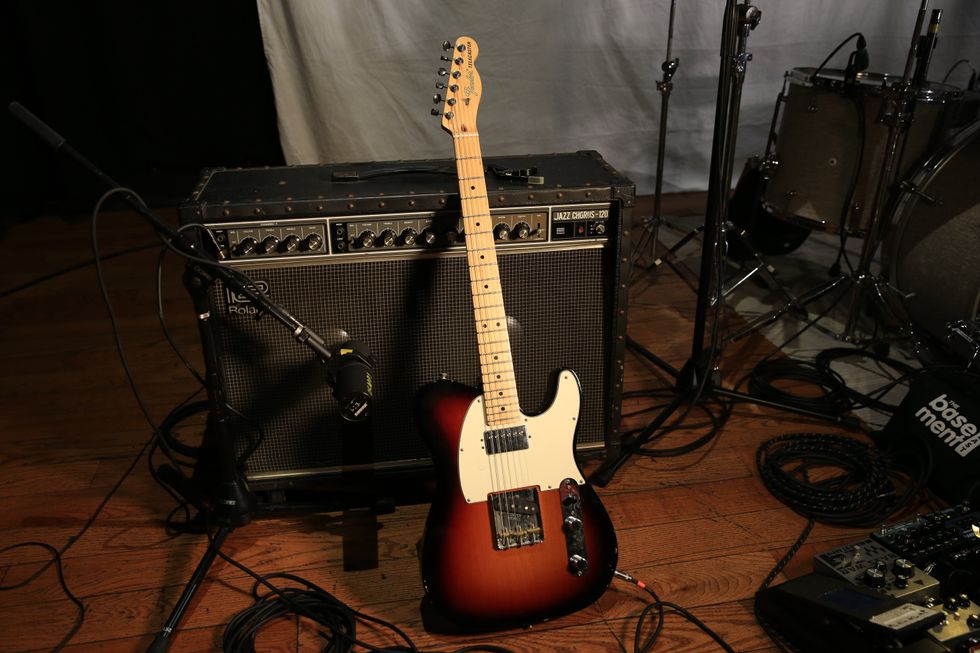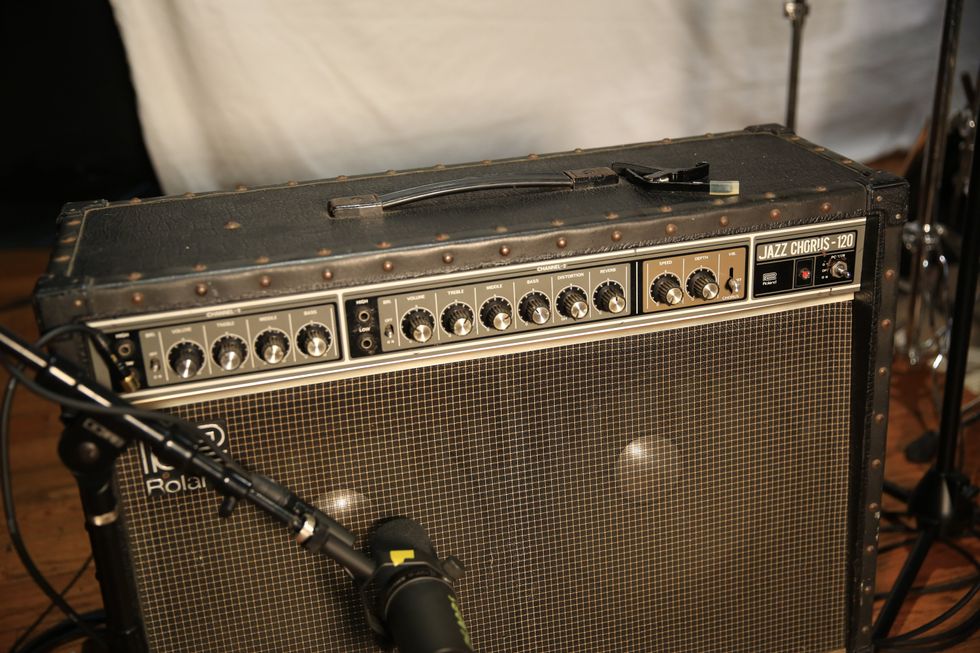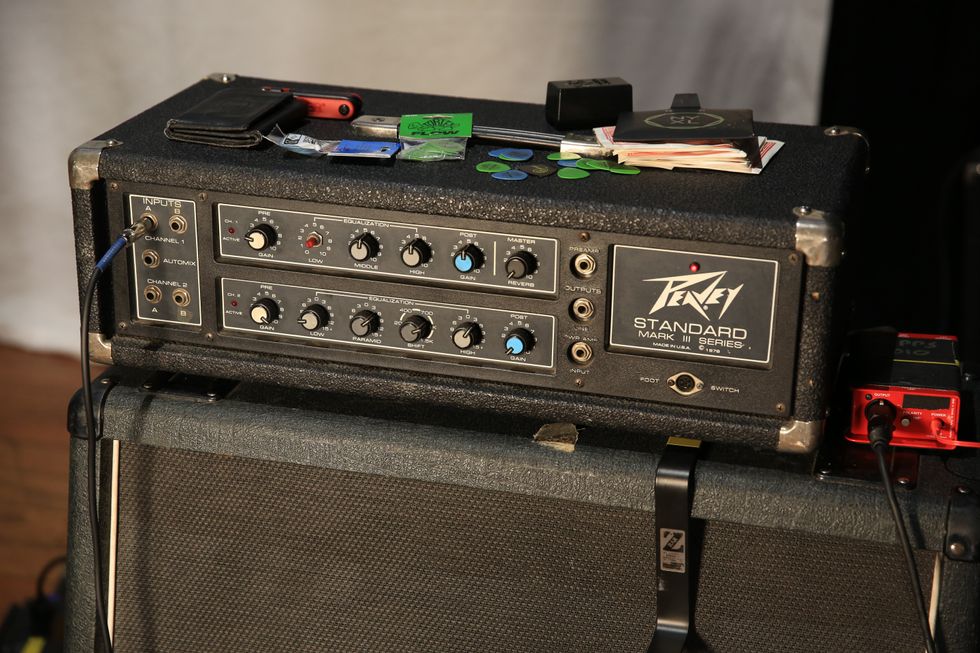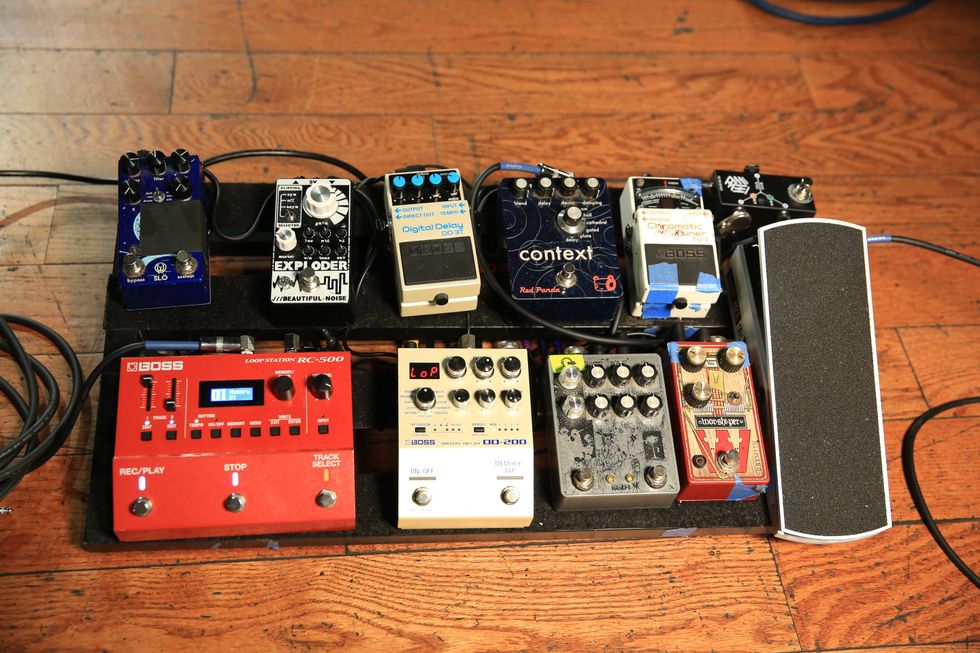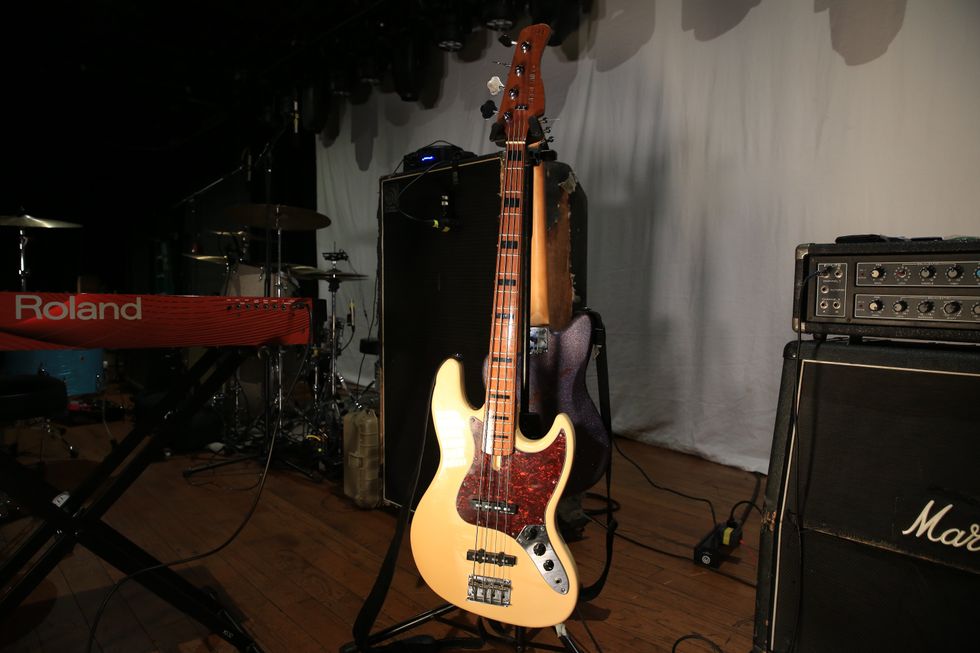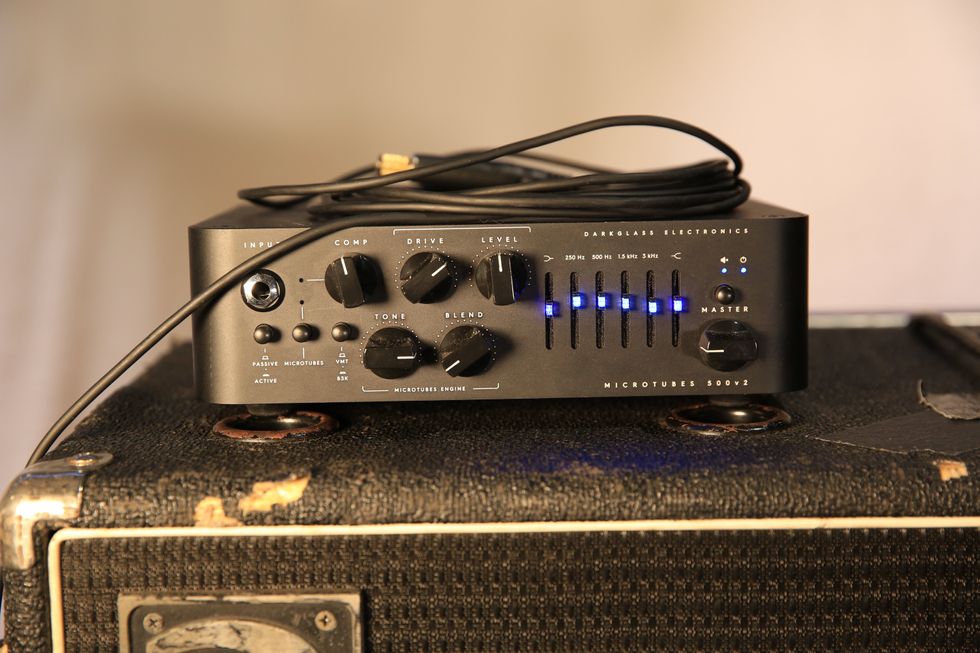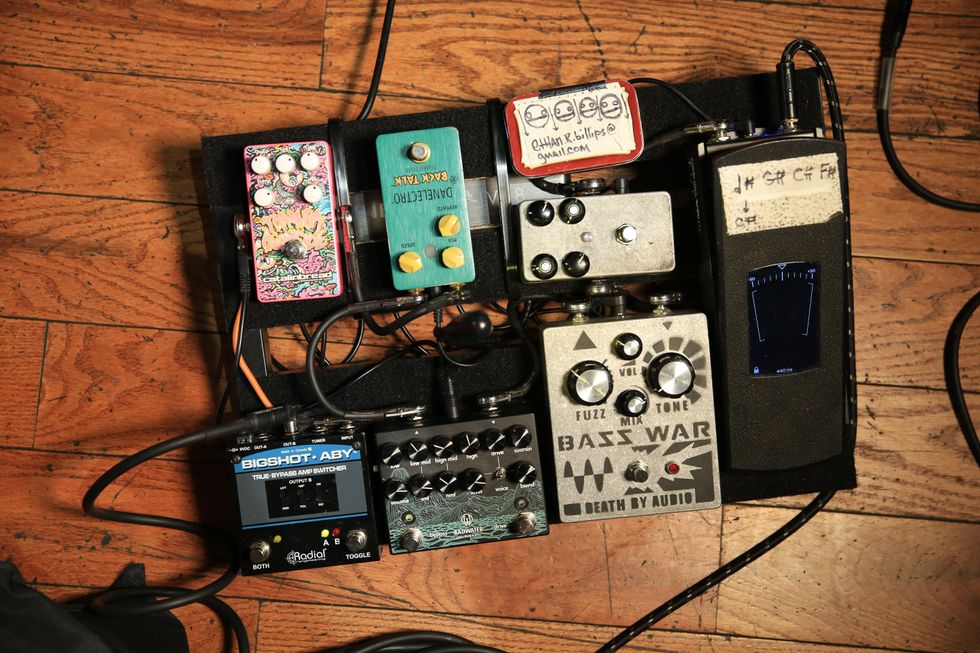Recorded with Serek Midwestern 2 and using effect’s interface direct into MacBook Pro using GarageBand.
Clip 1 - Head hunt synth preset. Neck pickup soloed.
Clip 2 - Drive and fuzz preset. Both pickups engaged.
Clip 3 - Dreamy preset. Both pickups engaged.
Long ago, when I first started playing in bands, it was a cool thing if you were rocking out with an effects box or two. And if you had a multi-effects pedal… whoa, you were kind of a big deal. The first company to really master and capitalize on multi mania was Boss, a respected titan in the pedal industry. Over the years, Boss has loaded these do-it-all tone command centers with tons of features and sounds, with which a player could spend countless hours tweaking to their delight. One of the company’s most recent multi-function toolboxes is the GT-1B, a streamlined unit designed for bassists that’s jam-packed with 21st-century features.
The Whole Enchilada
Residing inside the relatively small (12" x 6" x 2 1/4") GT-1B are amp-modeling options, compressor/limiters, a bevy of effects and patches (both preset and user generated), a tuner, and looping capabilities. One can send an MP3 device through the aux in and plug in a pair of headphones for isolated listening capabilities. It boasts a wah/expression pedal and also serves as an audio interface for your preferred DAW—and that’s still not all. In fact, the only component seemingly missing from the GT-1B is a coffee maker, but I refrained from holding that against it. The GT-1B is powered by either four AA batteries or an AC adaptor (not included).
Operating the 3-pound unit is accomplished through a series of controls that allow you to press, stomp, and dial in your sound. The trio of knobs located on the upper-middle section of the device allows you to navigate the various, selectable parameters displayed on the LED screen. For simple navigation, the “easy” section on the left side consists of two buttons that organize the effects based on music genre or effects categories, such as clean, crunch, or modulate.
More detailed operation can be achieved through the array of square-shaped buttons located in the middle of the unit, which are sorted by effect. A quick tap of one of these buttons engages its functionality, and holding down the selected button displays the controls of the effect, which are presented on the screen. Some of the buttons require a bit of exploration, as the FX1, FX2, and delay buttons also contain menus to assign different effects. The memory edit button reveals a signal-chain-style interface from which you can reposition effects and/or assign the different sections. The menu button is similar to the settings portion of a computer’s operating system, as it provides options for initial setup and connectivity.

The quartet of foot-operable features—including the right-side-located treadle that doubles as an expression pedal or wah—offer hands-free operation. Navigating the presets is achieved through the two footswitches labeled with up or down arrow symbols. (Pressing them simultaneously engages the tuner.) The CTL1 footswitch is the special-teams feature of the GT-1B. It’s an assignable switch that can take on different roles: engaging effects, tap delay, or providing a solo boost, just to name three. Stepping on the aforementioned switch and the neighboring “up” button activates the looper, which is then controlled with various taps of the CTL1. External switches and footpedals can also be connected with the GT-1B for expanded functionality.
If you’re finding all the buttons, dials, and switches of the GT-1B difficult to navigate, Boss has created the Boss Tone Central website, where you can download the Boss Tone Studio application to your computer, which provides tone shaping in a fairly intuitive layout. Through the software, a player can also download sound profiles created by various artists and other free content as it becomes available.
How Much Time Do You Have?
Reviewing the features of the GT-1B is like trying to explain Game of Thrones to someone who has never watched an episode. There’s a lot going on, and a lot to share. Fitting all of my impressions of the GT-1B would take as much space as a few gear reviews combined, so I’ve tried to keep it as concise as possible. For this review, I placed the GT-1B between a Serek Midwestern 2 bass and a Bergantino B|Amp paired with a Bergantino HD112 cab, and a MacBook Pro was used to explore features via the Boss Tone Studio.
Ratings
Pros:
Comprehensive unit with a multitude of usable tools. Massive tonal offerings in a relatively small package. The Tone Studio app makes for easy tweaking.
Cons:
Significant learning curve to really maximize its potential. Likely won’t satisfy analog disciples.
Tones:
Ease of Use:
Build/Design:
Value:
Street:
$199
Boss GT-1B
boss.info
While it did take some time to get familiar with the effects processor, I personally found that the layout and interface made it surprisingly easy to navigate. You should, of course, read the instructions for the device, but my initial exploration of the GT-1B began by simply hitting buttons and turning knobs. Pedestrian as this may sound, anyone who has had to learn a smart phone’s OS will be just fine experimenting with the pedal. Once familiarized, I opened up the Tone Studio and quickly found it to be a more pleasing way to manipulate the unit. It’s easier to explore the preset effects as well as change the parameters of the sounds. In particular, the “liveset” feature in the Tone Studio’s library is great for organizing effects for a particular gig or re-organizing the effects for easy access.
The tonal options are quite varied, from the practical to the peculiar. There are numerous onboard fuzz and distortion options, which, depending on the desired timbre, ranged from subtle to snarling. A personal favorite was the “drive & fuzz” preset, which will likely please fans of Roger Glover. The wah sounds were impressive, as they responded to the touch with immediacy and characteristic swelling. Boss did a nice job with the “octave wah” effect, which tracked very well, and the “boots funk slap” preset got me pretty close to the implied bassist’s tone. I really dug the “head hunt synth” preset, which emulates the bubbling synth sound heard on Herbie Hancock’s “Chameleon.” And it was a blast experimenting with the “pipe organ” effect and the ethereal textures that “atmosphere” and “dreamy” created. It goes without saying that the presets and effects of the GT-1B inspired different and unique approaches to my playing.
The pedal and switches also provided me with some quite useful tools. I’m not going to tell you the tuner is as precise as my strobe tuner, but it was accurate and quick. The looper function provides 32 seconds of sampling with layering capability and was simple and fun to use. I found it to be a valuable tool for practicing, whether I was soloing over looped chord changes, rehearsing melodies, or crafting quick compositions. And kudos to Boss for the smooth action of the expression/wah pedal, which can be calibrated through the GT-1B’s menu. Add to all this the means to record with the device, since it serves as an audio interface (which was used for the audio samples you can hear online), and I found the GT-1B to be a pleasing, albeit sometimes exhausting, playing partner.
The Verdict
Remember getting that giant box of crayons as a kid? Opening it, checking out all of the colors, and scribbling on paper to see how they look? The GT-1B is the sonic equivalent of the big Crayola box. It houses a wide spectrum of effects, and it’s rife with features and flexibility that—with a bit of exploration—can expand your tonal palate. Bassists who are comfortable with technology will enjoy delving into the deep layers of this new offering from Boss, especially with the assistance of the Tone Studio software. If you’re into the idea of a multi-effects unit—specifically one with great features, portability, and an approachable price—you might want to check out the GT-1B.
Watch the Review Demo:





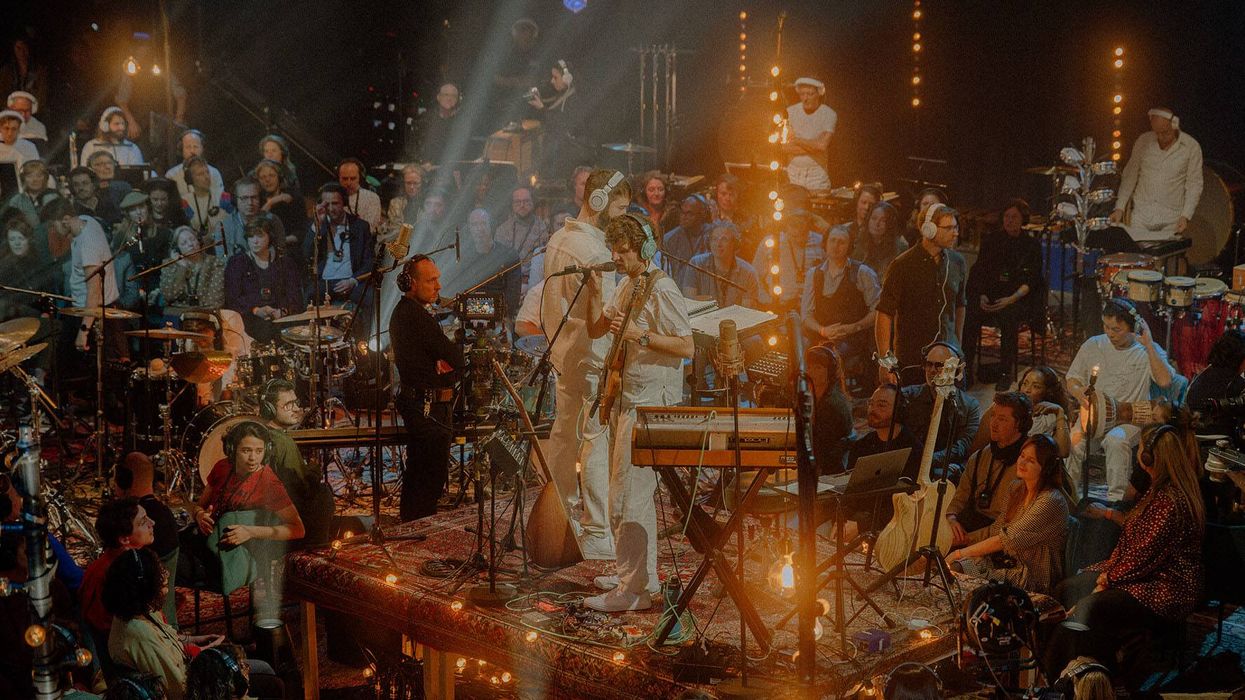
![Rig Rundown: AFI [2025]](https://www.premierguitar.com/media-library/youtube.jpg?id=62064741&width=1245&height=700&quality=70&coordinates=0%2C0%2C0%2C0)












 Shop Scott's Rig
Shop Scott's Rig
![Devon Eisenbarger [Katy Perry] Rig Rundown](https://www.premierguitar.com/media-library/youtube.jpg?id=61774583&width=1245&height=700&quality=70&coordinates=0%2C0%2C0%2C0)

